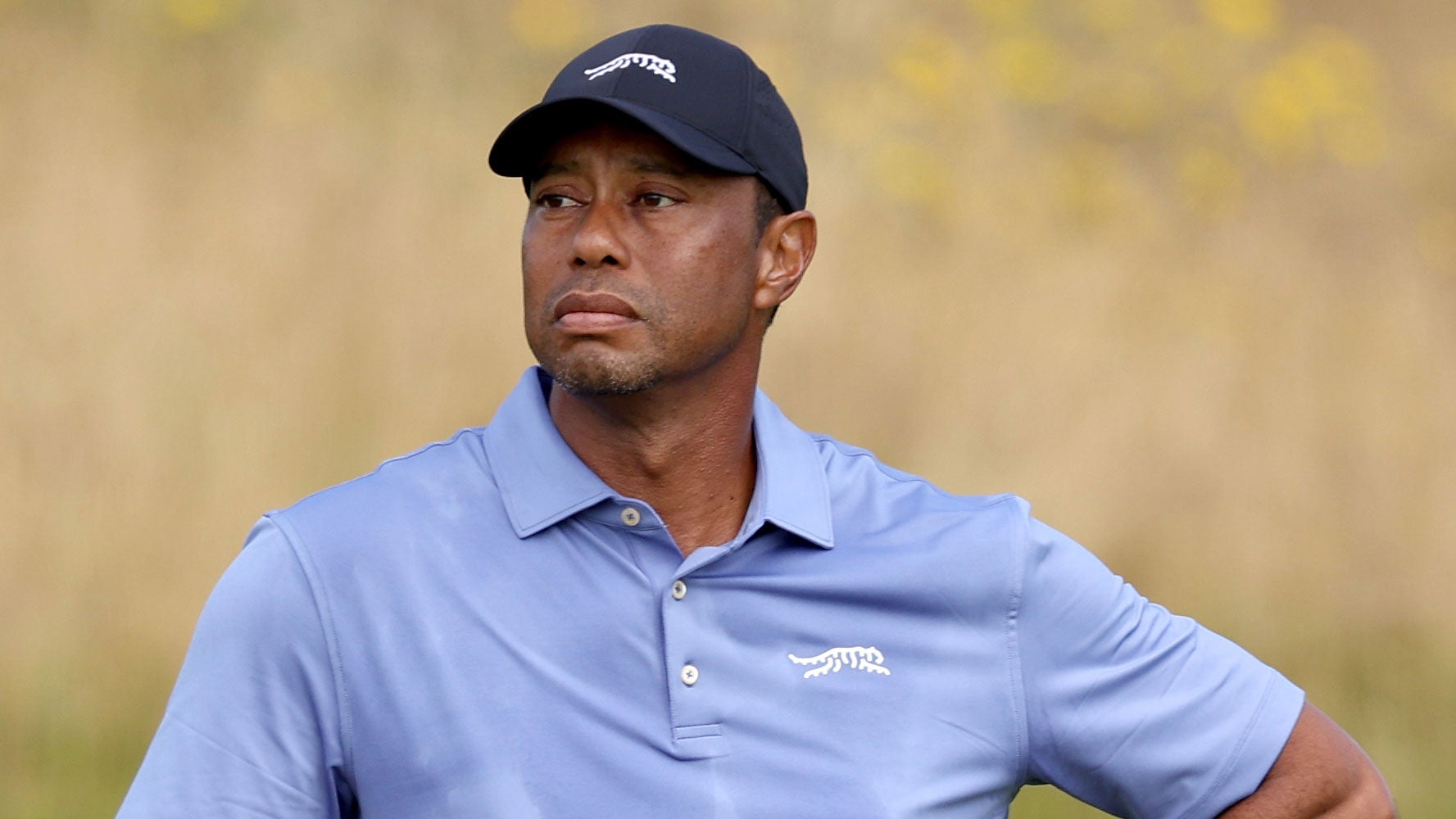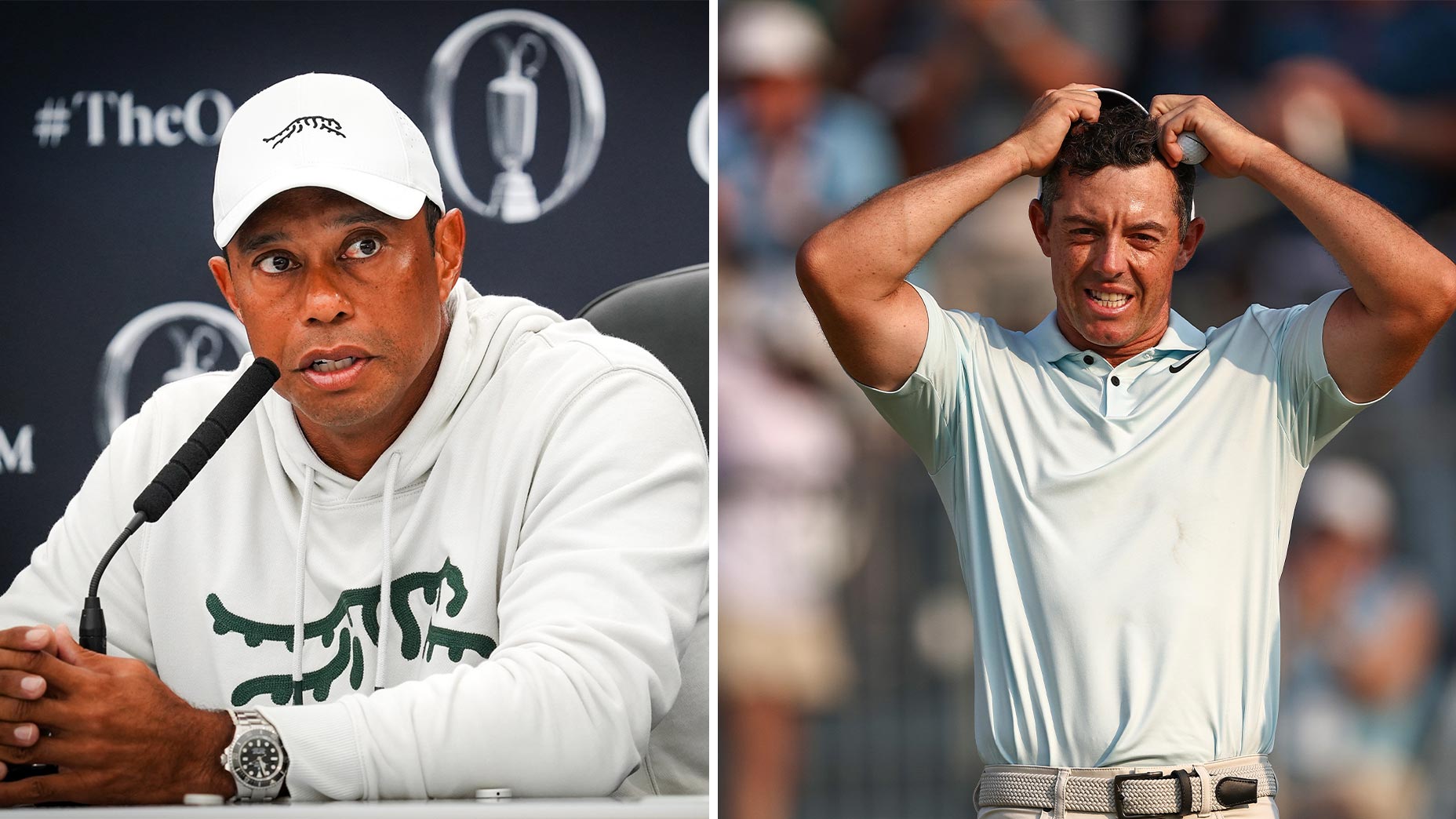Golf
A different side of Tiger Woods? He’s already shown it at this Open Championship

Tiger Woods during a practice round ahead of the Open Championship this week.
getty images
It’s been lovely, these past couple months, hearing Tom Weiskopf’s name in regular circulation. Last month, when the U.S. Open was at Pinehurst, Weiskopf was inducted into the World Golf Hall of Fame, two years, almost, after his death. This week, at Royal Troon, a monument to Tom went up, a tribute to his victory at the 1973 British Open at Troon, before Royal was attached to her name.
Weiskopf himself had a regal bearing. He was the whole package, with his upright carriage, his manly smile, his high-hands backswing, his sweaters, woven from the finest cashmere available. He was a perfectionist. His game was built for the Masters, for the U.S. Open. He contended a dozen times in those two events but didn’t win either. He won the one he wasn’t supposed to win, the British Open, with all its ground-game guesswork. The Open, Tom once told me, required him to shelve his instincts for perfection, and that, as the poet said, made all the difference.
I can remember that conversation like it happened this morning at breakfast. I was interviewing him on the practice putting green at Royal Birkdale at the 1991 Open. Weiskopf had three balls at his feet, each a different make and model, one of them a Top-Flite. He wasn’t experimenting. He was just hanging out, on the tail end of his playing career, in a country he loved. “It’s too bad I was born in the United States,” he said. “I should have been born a Scot.” He was 48 then.
Tiger Woods is 48 now. It was lovely, hearing Woods, at his Tuesday press conference, recall the practice round he played with Weiskopf before the 2004 Open at Troon, Weiskopf’s last appearance in any major. And before we go on here, let’s make a nod to Weiskopf’s play in the 1995 U.S. Senior Open at Congressional, which he won, four shots ahead of his lifelong foil, Jack Nicklaus. Maybe Tiger Woods will win a U.S. Senior Open someday. That would be something.
TW and TW played on the Tuesday of that 2004 Open week, starting at 6 in the morning. (You could start at 6 at night.) It was a threesome: Woods and his regular practice-round partner, Mark O’Meara, with Weiskopf joining. Woods had never played with Weiskopf before. Steve Williams, Tiger’s caddie at the time, knew Weiskopf. Woods is fundamentally shy, not outgoing. Often with Woods there’s an intermediary, somebody to initiate something. They played 18 holes in four hours. Tom told Tiger he was longer at 61 than he was at 30. (Much of this is courtesy of a 2004 story by Paul Kelso in The Guardian, the British newspaper. Go ahead, hug a reporter today.) Remembering that practice round from 20 years ago, Woods said, “I was giving him some stick, and he was giving me stick.” It was, Woods said, “a wonderful practice round.”
It’s all so lovely, so gentle, so I’m-48-now, don’t you think?
It was Woods, in his prime, who invented the idea that, in golf, not winning is losing. Long before that, Weiskopf had five second-place finishes in majors, four of them at Augusta, one in a U.S. Open. For Weiskopf, close-but-no-cigar was a failure and it gnarled at him, took a toll on him, but in his day you didn’t often hear the word loss. Loss, failure — maybe they were saying the same things in different ways, but I don’t think so. At 48, you’re more likely to remember the ones that got away. Apply as broadly as you may wish.
Tiger was different on Tuesday. Or one thing, he wasn’t wearing his usual ring of white adhesive tape on the middle finger of his right hand. (Back in the day, to use a phrase he’s been using forever, you never saw that, even on practice day.) But there he was (I saw it only by video), leaning forward in a black swivel chair, not a Swoosh in sight, talking about loss in its various forms.
He paid tribute to Weiskopf. He remembered a Ryder Cup match against his friend Darren Clarke shortly after the death of Heather Clarke, Darren’s wife. He made a reference to the many times Michael Jordan lost games with misses at the buzzer and a loss of his own, at the 2009 PGA Championship at Hazeltine, won by Y.E. Yang.
“Probably the hardest loss to get over,” Woods said, “because I had the lead. I had never lost a major championship while leading.”
If you’re in a two-person race for county commissioner, if you’re playing on a team that’s in the NBA final, if you’re the best golfer in the world trying to win a major after leading through 54 holes, you see winning and losing through one prism. Who can forget Charlie (Winning!) Sheen on this subject: “There’s only winning and losing. There’s nothing in between.”
Then the years pile up. Tiger surely looks at that practice round with Tom Weiskopf differently now than he did when he played it, 20 years ago. His son, Charlie, is playing in the USGA Junior Amateur next week, and Charlie, taking a page from his father, says he’s in it to win it. Tiger might have a different take about the event, surely knowing that at age 15, just to qualify for the event is an immense accomplishment. It’s a win.
Tiger Woods said on Tuesday that he’s playing this week to win. Only he knows what he really means by that. You can win at golf without hoisting a trophy when the shouting is over. Tiger would not have agreed with that in 2009, when he was the best player in the game. But that was 15 years ago. That was then.
Michael Bamberger welcomes your comments at Michael.Bamberger@Golf.com












